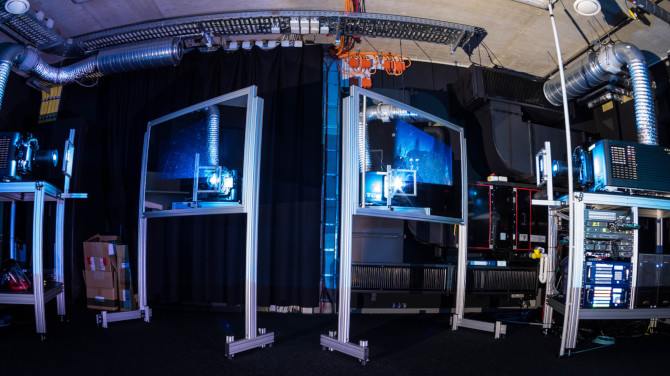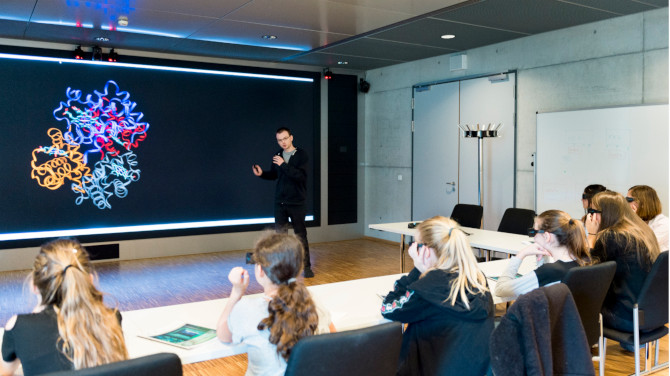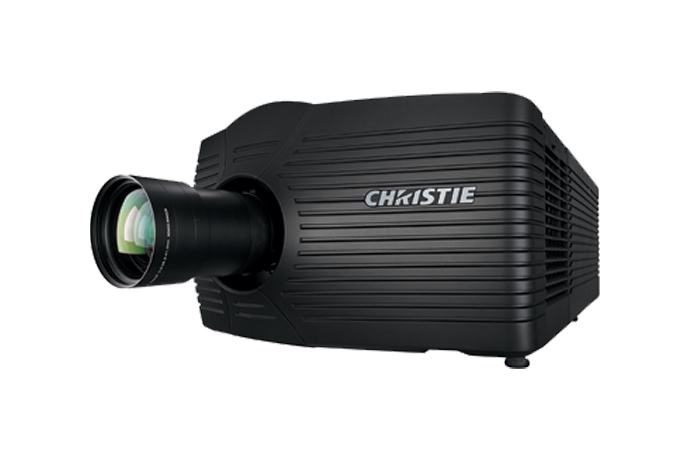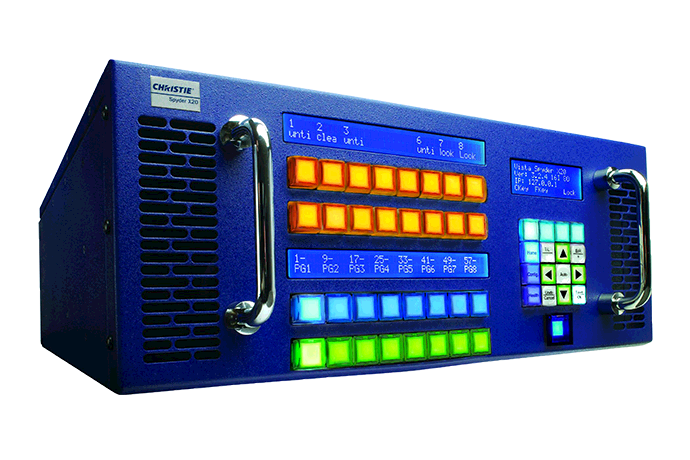VISCON GmbH
Germany
Education
Christie Mirage D4K2560, Christie Spyder X20
3D powerwall at the KIT
In 2008, the University of Karlsruhe and the Karlsruhe Research Centre established the Steinbuch Centre for Computing (SCC) in connection with the Karlsruhe Institute of Technology (KIT), to support research, teaching and innovation with perfectly tailored IT services and a high-performance infrastructure.
All three settings work with huge data volumes - which the SCC saves and processes - with the visualization of research findings and simulation of data is becoming an increasingly important part. The SCC was therefore searching for a solution for a new visualization laboratory that could project the data calculated by the high-performance FOHLR II research computer in pixel-precise detail. When planning the 3D powerwall, the team chose a rear projection system with two Christie® Mirage D4K2560 projectors and two Christie Spyder X20 video processors for uploading the content.
Pixel-precise display without shadows
"Alongside a large screen width, we were looking for extremely high image quality with correspondingly high resolution," said Rolf Mayer, laboratory manager, KIT.
David Seldner, research assistant at KIT, noted that presentations range from the simple to complex 3D scenarios with both often running simultaneously. With that in mind, the powerful and flexible Spyder X20 combined with the Mirage projectors is the perfect fit.
"We deliberately opted for rear projection, as it offers the advantage of not casting any shadows when someone stands directly in front of the screen, which happens a lot," explained Seldner. "After all, when visualizing test results it is important to be able to see all the fine details. The extremely broad resolution bandwidth of approximately 20 million pixels that the Spyder X20 offers is key here, as it allows high-resolution signals to be processed at each of the outputs available."
For the implementation, the SCC collaborated with Christie partner Viscon, a specialist in complex visualization solutions. The VISCON rear projection screen used, measuring 6.70 meters (22 feet) wide by 2.30 meters (7.5 feet) high, was an exceptional system component, too. The two native 4K 3DLP® projectors with 25,000 lumens were installed as rear projection units and deliver 2D or 3D images onto the front of the screen via surface-coated mirrors.
Each of the two Christie D4K2560 Mirage projectors is already capable of displaying native 4K content at 60 Hz on its own. Indeed, each pixel is scarcely larger than 1 square millimeter in the razor sharp images with a total resolution of 6,224 x 2,160 pixels.
"We deliberately opted for rear projection, as it offers the advantage of not casting any shadows when someone stands directly in front of the screen, which happens a lot," explains Seldner. "After all, when visualizing test results it is important to be able to see all the fine details. The extremely broad resolution bandwidth of approximately 20 million pixels that the Spyder X20 offers is key here, as it allows high-resolution signals to be processed at each of the outputs available."
Powerful technology, satisfying results
The visualization laboratory is currently being used around three or four times per week for simulations in 3D and active stereo. The spectrum of applications ranges from biomolecular research, through urban development, all the way up to medicine. The laboratory is suitable both for interactive work in a team (three visualization computers are available as workplaces) and for presenting results or giving lectures in front of large groups, as it also has a connected auditorium with seating.
"One of the first projections we ever did was to simulate the paranasal sinuses of a patient with respiratory problems," says Seldner. The images of the inside of the nose produced by computer tomography were projected onto the screen to allow a search for possible causes down to the tiniest detail."
"We have been very satisfied with the results achieved to date. The system is popular and also in demand as a demonstrator at visitor events, such as the Girls' Day, general open days, pupil colloquiums, class visits and so on," adds Mayer. The KIT, which has a rich history in the field of computer science, is therefore also ready for the future.
Future topic of visual simulation
"We are delighted that we were able to secure optimal implementation of this complex project for the KIT," says Eric M. Küpper, CEO at Viscon. Visual simulation is one of the core issues of the 21st century, as the fields of research and development in particular benefit from it. "The systems available today allow complex things to be displayed in perfect detail. This provides scientists with invaluable support."
The head of the SCC laboratory shares this view.
"With constantly growing data volumes, computation results need to be evaluated both quickly and interactively - in other words, they need to be visualized," says Mayer. "Visualization solutions like this are therefore becoming increasingly important." In combination with a tracking system, the solution used already allows users to interact directly with the visualized object."
"We are seeing more and more simulations with constantly growing data volumes," Seldner adds. "In the short- to mid-term, this will mean that results will already need to be visualized during the extremely time-consuming and long-running simulation, so that alterations can be made to the simulation early on if necessary."
All photos provided by courtesy of:
© Karlsruher Institut für Technologie (KIT) / Markus Breig
© Karlsruher Institut für Technologie (KIT) / Rolf Mayer



